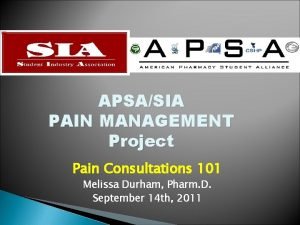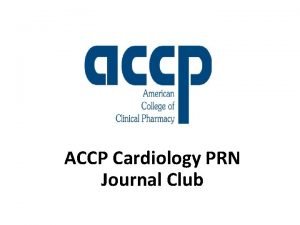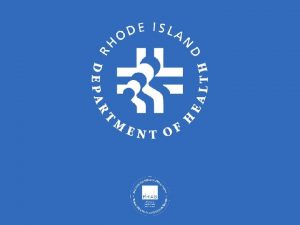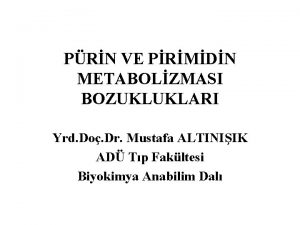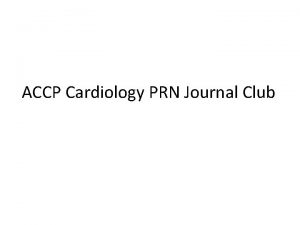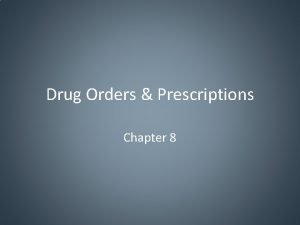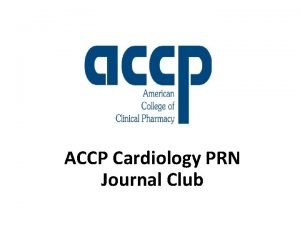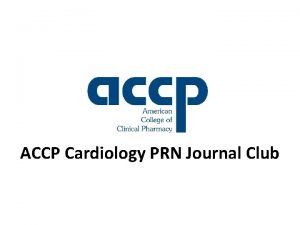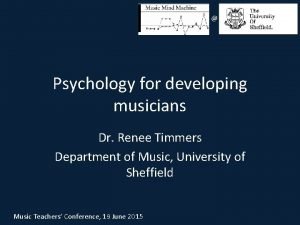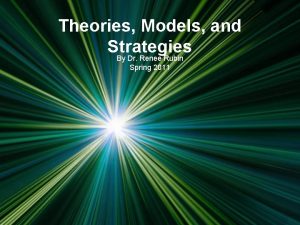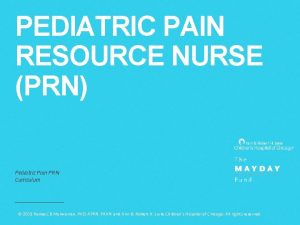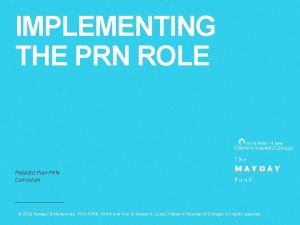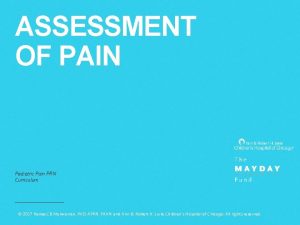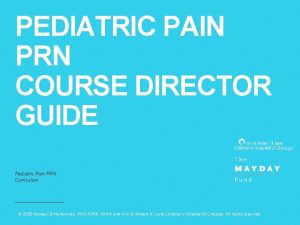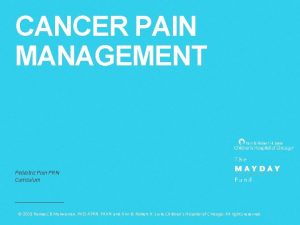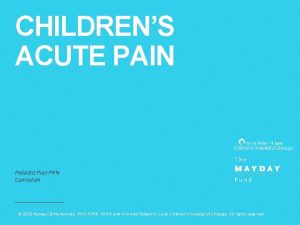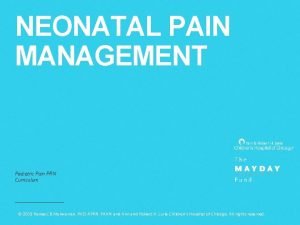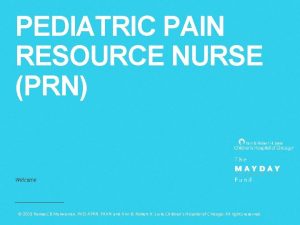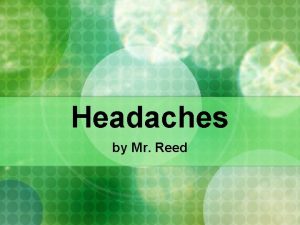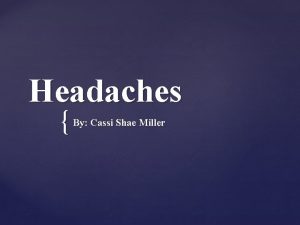PEDIATRIC HEADACHES Pediatric Pain PRN Curriculum 2017 Renee















- Slides: 15

PEDIATRIC HEADACHES Pediatric Pain PRN Curriculum © 2017 Renee CB Manworren, Ph. D, APRN, FAAN and Ann & Robert H. Lurie Children’s Hospital of Chicago. All rights reserved.

Pediatric headache: prevalence and classification Headache classification • Primary • Secondary Etiology dictates treatment plan If unknown cause, goal is pain relief or reduction • 60% of children experience a headache in a 3 month period • 4% of preschoolers • 10% of school-aged children (girls 1: 1 boys) • >16% of adolescents (more girls 3: 1 boys) • 17% reporting severe headache in the last year | 2

Headache evaluation In addition to obtaining a thorough comprehensive pain history, determine: • Is this the first evaluation? • Has the child already been diagnosed with migraines but there had been a sudden change? • Is the child able to play during the headache? • Is the headache getting less responsive to treatment? • Are there any known triggers of headache? • Are there associated symptoms? | 3

Headache evaluation Red flags: when to worry • Awakens child • Onset: sudden, abrupt, split-second (thunderclap) • Neurologic symptoms or abnormal findings • Worse when lying down, coughing, Valsalva • Recurrent, localized • Lasting more than 6 months • Systemic symptoms (fever, weight loss) • Previous headache history or headache progression | 4

Marla How will you assess Marla’s headache symptoms? Marla is a 10 -year-old girl who presents to the ED with what she reports as the worst headache ever. • Has had headaches; treated with ibuprofen and rest • No recent injury or environment/school changes | 5

Migraine • An inherited, chronic disorder with episodic attacks • Children 3 -7 y (1 -3%), Adolescents (8 -23%) • More common in girls than in boys • Focus treatment on prevention to reduce frequency and severity of headaches Types of migraines • Status migrainous • Migraine with aura • Migraine without aura | 6

Treatment plan for migraines Manage Triggers • • • Stress Fatigue Illness Fasting Dehydration Food Use Pharmacologic Treatment • Abortive: NSAIDS, Triptans, Opioids • Preventative: Cyproheptadine, Antiepileptics, Tricyclic antidepressants Consider Neutraceuticals | 7

Other headaches Tension-type headache • • Most common type of primary headache Headache lasting 30 min to 7 days May be episodic or chronic Not accompanied by nausea, vomiting, photophobia or phonophobia Chronic daily headache • Primary HA ≥ 15 days per month lasting >4 hours • Prevalence in children unknown • Four types: Chronic migraine, Chronic tension type headache, New daily persistent headache, Hemicrania continua | 8

Long-term goals for managing headache pain Reduce frequency Reduce reliance on ineffective acute medications Improve quality of life Balance biobehavioral with pharmacology Biobehavioral treatments include: • • Stress management Sleep hygiene Exercise Dietary modifications | 9

SMART headache management S M A R T Regular and sufficient sleep Regular and sufficient meals and hydration Regular aerobic exercise Relaxation and stress reduction Trigger avoidance | 10

Secondary Headaches Idiopathic intracranial hypertension Post-traumatic Medication overuse

Biobehavioral headache management Physical Exercise & lifestyle management Massage therapy Cognitive Behavior Therapy Relaxation techniques Biofeedback Education & empowerment | 12

? What questions do you need to ask in order to development an appropriate treatment plan? Marla Headache started upon waking, vomiting Keeps head covered, bothered by lights Felt weird last night, no visual symptoms Headache worse with movement and lying down • Doing well in school; rewarded with coffee drink • • | 13

Case summary Marla’s treatment plan: • Workup • Triggers • Rescue plan • • • Marla Work-up was negative Patient improved with hydration, ketorolac Discussed triggers Reviewed rescue plan: naproxen, rizatriptan Discussed SMART headache management Shared video as part of education Migraine: How it works and how to get it under control (7: 30) | 14

In Summary
